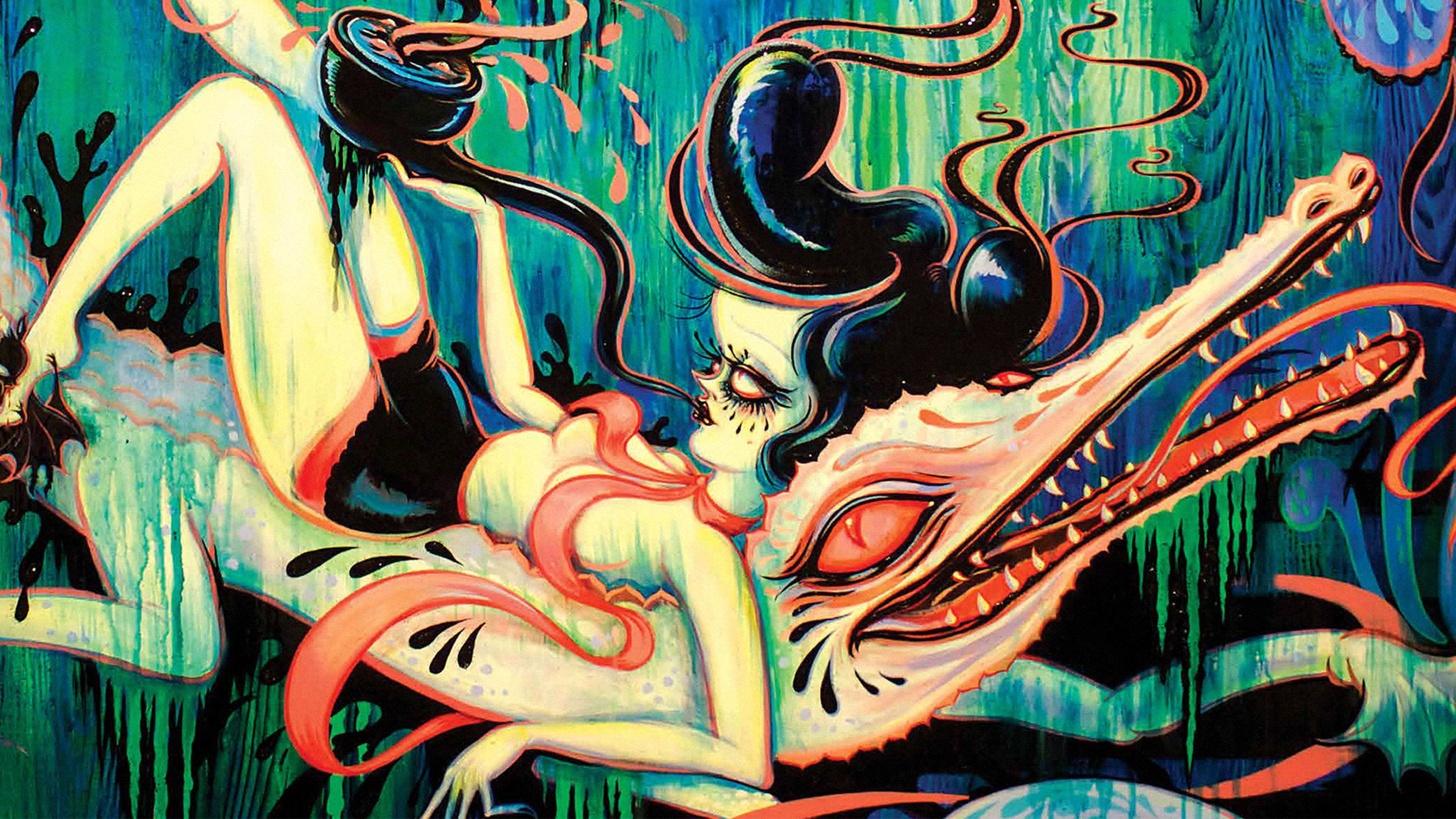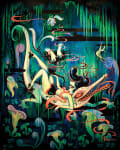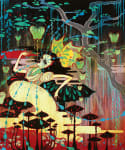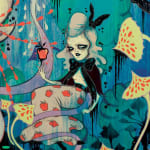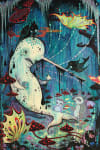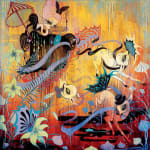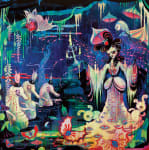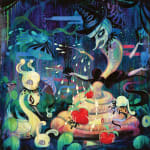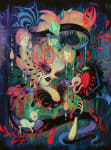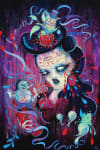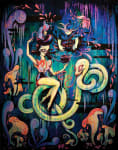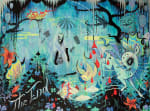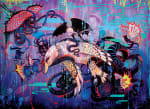Cinderella proved her enduring appeal last month when Disney’s live-action remake topped the box office. But California artist Camille Rose Garcia cultivates a distinctly darker take on the fair-haired heroine.
“When they asked me to do it at first I was like, ‘I hate that fairy tale,'” says Garcia, who just finished illustrating a new edition of the Brothers Grimm fairytale for HarperCollins. “But then I re-read the story and realized Cinderella’s basically like a slave who sits in the corner of the fireplace covered in ashes! Even though she’s been drawn a certain way for so many years, I gave Cinderella purple and black hair. I guess I’m always trying to fight against the dominant stereotypes.”
Garcia showcases her gift for refashioning fairytale archetypes in Mirror, Black Mirror. The upcoming picture book features wickedly gorgeous tableaux painted by Garcia during a seven-year hiatus in the woods of Northern California.
Fresh from a day trip to Joshua Tree National Park, Garcia, now based in the southern California college town of Claremont, Garcia talked to us about how Bambi, Carl Jung, Walt Disney, Mexican surrealist Frida Kahlo, Betty Boop and the Clash inspired her to craft mutant fairytale vistas for 21st-century audiences.

The Disney Effect
Garcia spent her childhood a few minutes from Disneyland in what she describes as the “beige hell” of Orange County California. “I grew up going to Disneyland,” she says. “From a nerdy point of view I liked the artistry of Snow White Bambi and Pinocchio because they were all hand drawn, but I never gravitated toward princess fairy tales like Beauty and the Beast or Cinderella.”
Garcia was raised by a single mother. “She worked as a muralist and sign painter so I started helping her on jobs when I was 12 years old,” Garcia recalls. “This idea of ‘Oh you just have to be pretty and a man will come along and save you’–that was not part of my reality. I was more into the witches and vultures and villains.”
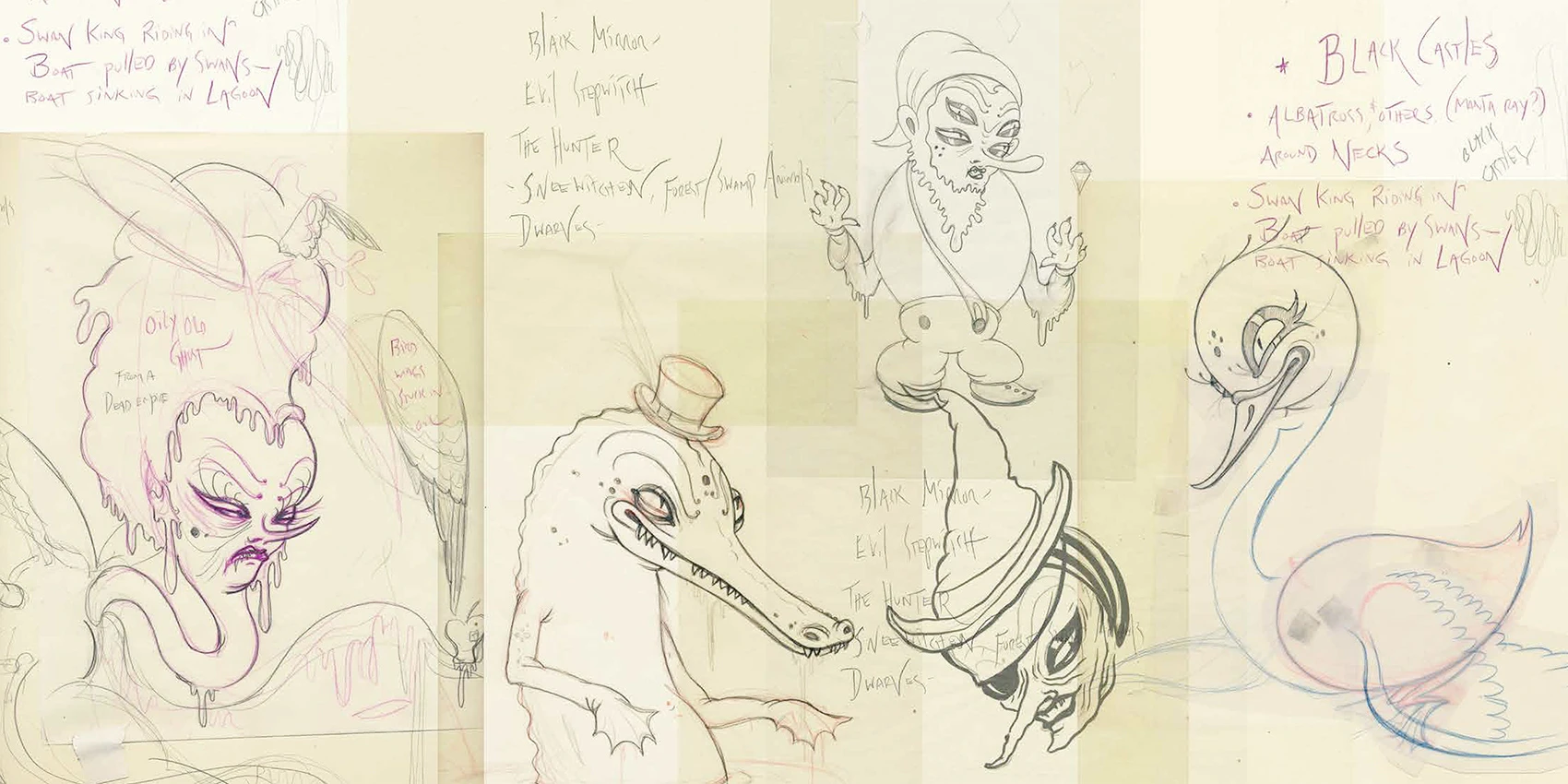
A Punk Rock Vision
In high school, already an accomplished illustrator, Garcia got obsessed with punk rock. “I really got into bands like the Dead Kennedys and the Clash because they came up with a very direct emotional response to repression,” Garcia says. “In the same way way the Clash made great music that also had a message, I made it my goal as an artist to do political commentary but make it sort of personal and also have the art be fun.”

Snow White Meets Oil Spill
Mirror, Black Mirror includes pictures from Garcia’s exhibition Snow White and the Black Lagoon, which repurposed fairy tale imagery to address environmental catastrophe. “I did these paintings right after the Gulf Oil Spill, so the show’s about this fairy tale land that’s been soiled and ruined,” Garcia explains.
For the Hunters and Warriors painting, pictured above (click to enlarge), Garcia deciphers key references.
Dwarves: “Dwarves are so little they can get into the mines, so here, they’re coming out of this cave, part of this sacred animal, with gems. Researching Snow White and looking at mythologies globally, I learned that ancient Mayan stories also had dwarves and magic mirrors, which I found fascinating.”
Snow White: “Of course in the original story Snow White falls into a slumber and that’s a recurring theme of mine. I like to show how we’re sort of sleep walking through this life and not paying attention to what we’re doing to nature and the rest of the world.”
The Big White Cat. “Nature is represented by this white panther or white jaguar, which is a sacred animal in Mayan culture. Being part Mexican, I wanted to see if there were any connections that could tie Snow White into to my personal mythology.”
The Hunter: “In Snow White, The Hunter has to bring back the heart and lung of a pig. Here, it’s about mining nature–the white panther–and extracting its heart and soul but throwing the rest away.”
The Vase: “One of my characters, the Somnambular Witch, has bottles of sleep poison that she pours on the apple. Those bottles with the ‘S’ represent a poison in the environment. Again, it’s the Gulf Oil Spill idea that there’s this vast black poison spilling out.”
Feminine Archetypes
Garcia tends to channel her own perspective through a profusion of female figures. She says, “The women in my paintings sometimes look helpless because that’s how I feel facing the problems we face as a society: the train will come off the rails at some point. But I also depict strong female characters who face hard situation rather than just turning a blind eye.”
Garcia traces her fascination with slightly surreal heroines back to Max Fleischer’s Betty Boop cartoons from the 1930s. The archetype resurfaced six decades later as part of the “Low Brow” art movement. She says, “Suddenly that style of cartoony, overly cute girls was everywhere so I had to rethink, what does this harmless, sort of infantilized character represent for women?”
In future work, Garcia’s expanding her frame of reference to include Greek mythology, history and 20th-century fiction. “The show I’m working at now uses different versions of the feminine archetype,” she says. “There’s the old witch, and there’s the strong Joan of Arc warrior woman, and a younger Lolita kind of character.”
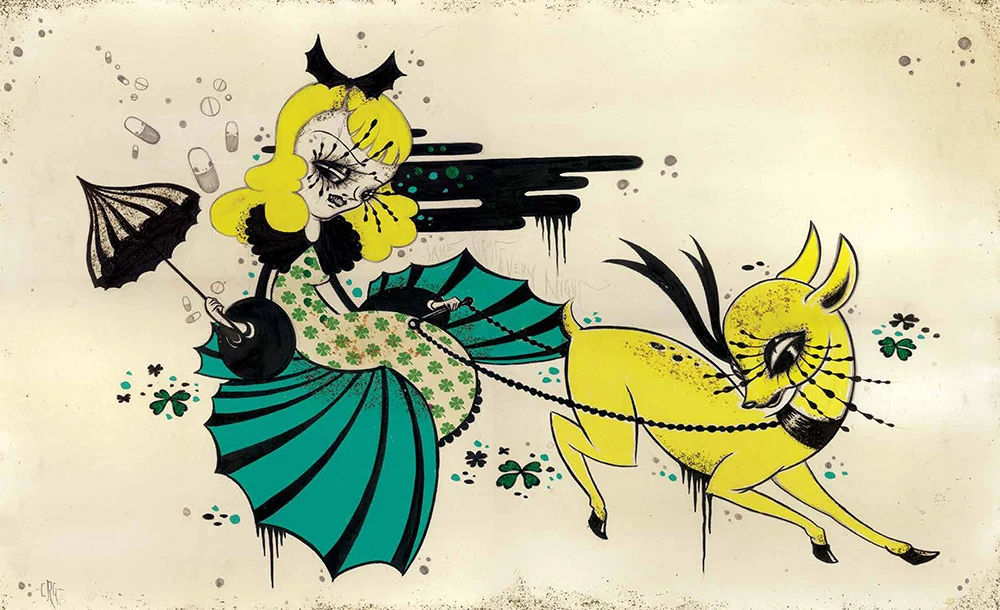
Straddling the Edge
Simultaneously bleak and charming, Mirror, Black Mirror invests even the creepiest scenarios with jewel-like blasts of color and meticulous draftsmanship. “I’m always straddling this edge,” explains Garcia. “I want to make paintings people can enjoy looking at that celebrate the magic and beauty in nature. At the same time, I don’t want to just hide inside a pretty fairy tale.”
The beauty of the fairy tale is that it leaves plenty of room for interpretation, Garcia says. “Walt Disney took ancient stories from all different cultures and re-told them in a way that connected with regular people, not just an art world crowd.” While Garcia shares Disney’s populist intent, she tilts her work toward the darker realms of semi-hallucinogenic storytelling.
Citing the influence of misanthrope visionaries William Burroughs, Philip K. Dick and R. Crumb along with philosopher Carl Jung, Frida Kalo and Mexican surrealist Leonora Carrington, Garcia says, “I like to create a pictorial space where you can’t tell where the story begins or ends, as if you’ve woken up from a dream. I use repeating patterns of the collective unconscious that we all inherently understand, as humans. The language of symbols gives people something they can grasp on to.”
Recognize your brand’s excellence by applying to this year’s Brands That Matter Awards before the early-rate deadline, May 3.
